 | ||
Instances Tourist Trophy 2017, 2016 Isle of Man TT | ||
The International Isle of Man TT (Tourist Trophy) Race is a motorcycle sport event held annually on the Isle of Man in May or June of each year since the inaugural race in 1907. The Isle of Man TT for many years was the most prestigious motorcycle race in the world and also seen as the ultimate test for competitors and machines alike. The Isle of Man TT has been administered by the Auto-Cycle Union (ACU) (previously the Auto-Cycle Club) since 1907 and the Isle of Man TT race organisation is currently managed since 2008 by ACU Events Ltd, a fully owned subsidiary of the ACU. In 2016, the Vision Nine Group was appointed by the Isle of Man Department of Economic Development in a ten-year deal as a race promoter for the 2017 Isle of Man TT onwards. In a profit-sharing arrangement with the private promoter, the Vision Nine Group will invest £2.5 Million in the event and the promoter replacing the previous Isle of Man Department of Economic Development staff and race organisation.
Contents
- Isle of man tt the best insane race ever tourist trophy 200 mph
- Gordon Bennett and Tourist Trophy car races
- International Motor Cycle Cup Race 1905
- Format of the races
- Race procedure
- Eligibility
- Superbike TT
- Supersport TT
- Superstock TT
- Lightweight TT
- Sidecar TT
- Senior TT
- TT Zero
- Ultra Lightweight TT
- Clubman TT and Production TT
- Practice sessions
- Practice week sessions
- Race week practice sessions
- Practice TT Zero
- Race schedule
- TT course official vehicles
- Crossing places during practice and races
- In Douglas
- Elsewhere
- TT Course access road
- Description
- Safety and danger
- FIM Championship Rounds 19491976
- Race winner trophies
- References
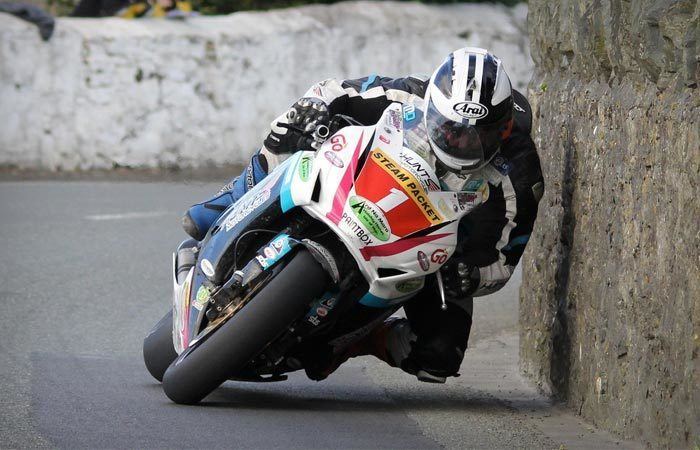
The Isle of Man TT has been traditionally run in a time-trial format on public roads closed for racing by the provisions of an Act of Tynwald (the parliament of the Isle of Man). The event consists of one week of practice sessions followed by one week of racing. It has been a tradition perhaps started by racing competitors in the early 1920s for spectators to tour the Snaefell Mountain Course on motorcycles during the Isle of Man TT on "Mad Sunday," an informal and unofficial sanctioned event held on the Sunday between 'Practice Week' and 'Race Week.'
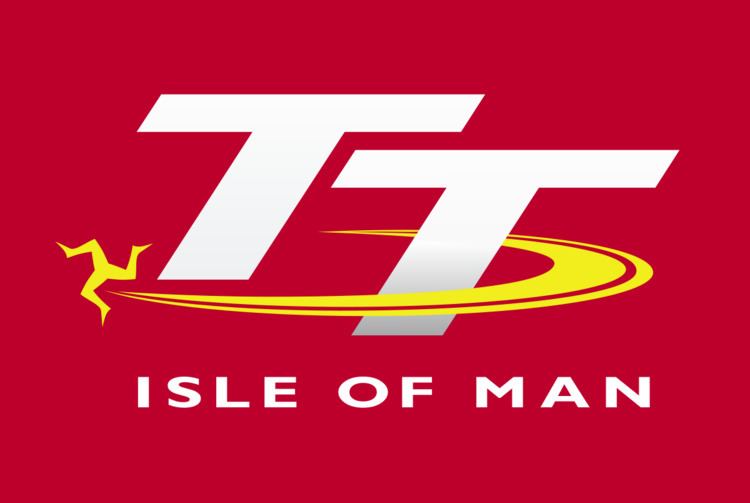
The first Isle of Man TT race was held on Tuesday 28 May 1907 and was called the International Auto-Cycle Tourist Trophy. The event was organised by the Auto-Cycle Club over 10 laps of the Isle of Man St John's Short Course of 15 miles 1,470 yards for road-legal 'touring' motorcycles with exhaust silencers, saddles, pedals and mudguards.

From 1911 the Isle of Man TT transferred to the much longer Snaefell Mountain Course of 37.40 miles (current length 37.73 miles). The race programme developed from a single race with two classes for the 1907 Isle of Man TT, expanding in 1911 to two individual races for the 350cc Junior TT motor-cycles and the Blue Riband event the 500cc Senior TT race. The race did not take place from 1915 to 1919 due to the First World War. It resumed in 1920. A 250cc Lightweight TT race was added to the Isle of Man TT programme in 1922 followed by a Sidecar TT race in 1923.
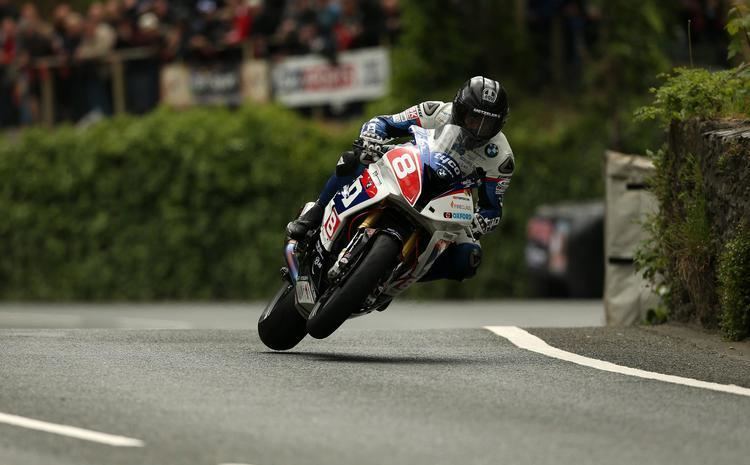
There was no racing on the Isle of Man between 1940 and 1945 due to the Second World War. It recommenced with the Manx Grand Prix in 1946 then the Isle of Man TT in 1947 with a greatly expanded format that included the new Clubman's TT races. The Isle of Man TT became part of the FIM Motor-cycle Grand Prix World Championship as the British round of the World Motor-Cycling Championship during the period 1949–1976. Following safety concerns with the Snaefell Mountain Course and problems over inadequate 'start-money' for competitors, a boycott of the Isle of Man TT races occurred from the early 1970s by many of the leading competitors, motorcycle manufactures and national motorcycle sporting federations. It is still billed in popular culture as the most dangerous motorsport event in the world, with over 250 fatalities in its history. In 1976, the Isle of Man TT lost its world championship status and was transferred to the United Kingdom by the FIM and run as the British Grand Motor-Cycle Grand Prix for the 1977 season. The Isle of Man TT Races then became an integral part of the new style TT Formula 1, Formula 2 and Formula 3 World Championships between 1977 and 1990 to develop and maintain the international racing status of the Isle of Man TT races. The event was redeveloped by the Isle of Man Department of Tourism as the Isle of Man TT Festival from 1989 onwards. This included new racing events for the new Isle of Man TT Festival programme including the Isle of Man Pre-TT Classic Races in 1989 followed by the Isle of Man Post-TT Races from 1991 and both held on the Billown Circuit. In 2013, the Isle of Man Classic TT was developed by the Isle of Man Department of Economic Development and the Auto-Cycle Union for historic racing motorcycles and along with the Manx Grand Prix now forms part of the 'Isle of Man Festival of Motorcycling' now held in late August of each year.
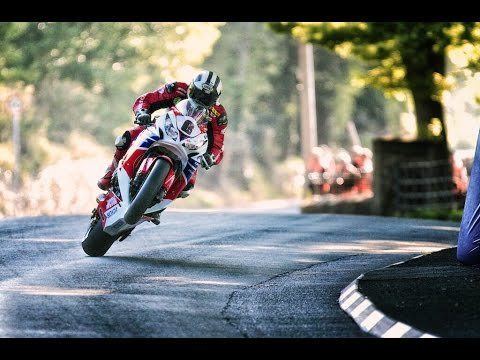
Isle of man tt the best insane race ever tourist trophy 200 mph
Gordon Bennett and Tourist Trophy car races
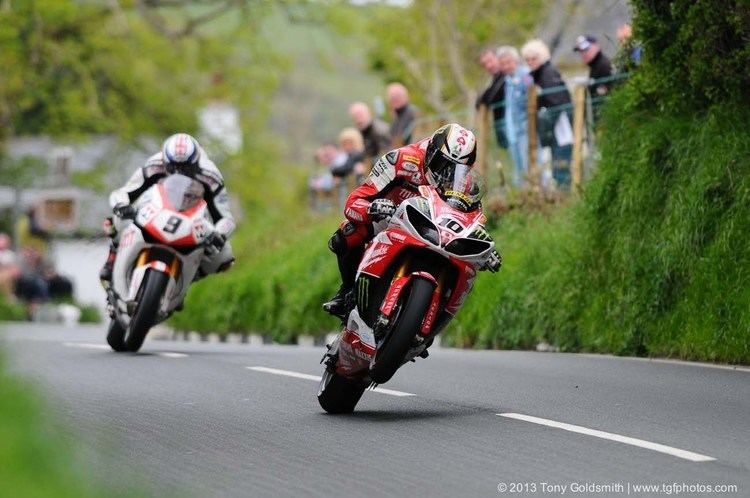
Motor racing began on the Isle of Man in 1904 with the Gordon Bennett Eliminating Trial, restricted to touring automobiles. As the Motor Car Act 1903 placed a speed restriction of 20 mph (32 km/h) on automobiles in the UK, Julian Orde, Secretary of the Automobile Car Club of Britain and Ireland approached the authorities in the Isle of Man for the permission to race automobiles on the island's public roads. The Highways (Light Locomotive) Act 1904 gave permission in the Isle of Man for the 52.15-mile (83.93 km) Highroads Course for the 1904 Gordon Bennett Eliminating Trial which was won by Clifford Earl (Napier) in 7 hours 26.5 minutes for five laps (255.5 mi or 411.2 km) of the Highroads Course. The 1905 Gordon Bennett Trial was held on 30 May 1905 and was again won by Clifford Earl driving a Napier automobile in 6 hours and 6 minutes for six laps of the Highroads Course. This was followed in September 1905 with the first Isle of Man Tourist Trophy Race for racing automobiles, now known as the RAC Tourist Trophy and was won by John Napier (Arrol-Johnston) in 6 hours and 9 minutes at an average speed of 33.90 mph (54.56 km/h).
International Motor-Cycle Cup Race (1905)
For the 1905 Gordon Bennett Eliminating Trial it was decided to run an eliminating trial for motorcycles the day after for a team to represent Great Britain in the International Motor-Cycle Cup Races. An accident at Ramsey Hairpin forced out one of the pre-race favourites and the inability of the motorcycle competitors to climb the steep Mountain Section of the course forced the organisers to use a 25-mile (40 km) section of the Gordon Bennett Trial course. This ran from Douglas south to Castletown and then north to Ballacraine along the primary A3 road and returned to the start at the Quarterbridge in Douglas via Crosby and Glen Vine along the current Snaefell Mountain Course in the reverse direction. The 1905 International Motor-Cycle Cup Race for five laps (125 mi or 201 km) was won by J.S. Campbell (Ariel) despite a fire during a pit stop in 4 hours, 9 minutes and 36 seconds at an average race speed of 30.04 mph (48.34 km/h).
Format of the races
The TT Races since the first race in 1907 have been in the format of time-trial. The races held on the Clypse Course during the period 1954–1959 were the more traditional full grid starts along with the 1924 Lightweight TT Race and Clubmen TT Races from 1948, which were also "mass-start" races. The current format is a "clutch start" and race competitors will be "started singly at 10-second intervals".
Race procedure
Eligibility
Entrants must be in possession of a valid National Entrants or FIM Sponsors Licence for Road Racing.
Superbike TT
The 2015 specification for entries into the Superbike TT race are defined as:
Minimum Weight 165 kg (364 lb). Other machines admitted at the discretion of the Organisers
Supersport TT
The 1911 Isle of Man TT was the first time the Junior TT race took place, open to 300 cc single-cylinder and 340 cc twin cylinder motorcycles, contested over five laps of the new 37.5-mile (60.4 km) Snaefell Mountain Course. The first event on the new course was the Junior TT Race contested by 35 entrants, won by Percy J. Evans riding a Humber motor-cycle at an average race speed of 41.45 mph (66.71 km/h). The 1912 event was the first to limit the Junior TT to only 350 cc machines and this engine capacity prevailed until 1994 when replaced by the 600 cc Supersport class.
The 2015 specifications for entries into the Supersport TT race are:
Minimum Weight 161 kg
Superstock TT
The 2015 specifications for entries for the Superstock TT, an event for production based motorcycles racing with treaded road tyres, are based on the FIM Superstock Championship specifications, as follows:
Minimum (Dry) Weight 170 kg
Lightweight TT
The 1922 event was the first time the Lightweight TT race took place, won by a motorcycle-journalist Geoff S. Davison, riding a Levis at an average speed of 49.89 mph (80.29 km/h) for seven laps of the Snaefell Mountain Course. As with the Ultra-Lightweight TT Race, the event was dropped from the race schedule in 2004, but was reintroduced 2008–2009, held on the Billown short road circuit and then dropped again from the race schedule on cost grounds.
The 2015 specifications for entries into the Lightweight TT race are:
Sidecar TT
The 1923 TT was the first time the Sidecar TT race was run, over three laps (113 mi or 182 km) of the Mountain Course and was won by Freddie Dixon and passenger Walter Perry with a Douglas and special banking-sidecar at an average race speed of 53.15 mph (85.54 km/h). For the 1926 event the Sidecar and Ultra-Lightweight TT classes were dropped due to lack of entries.
The Sidecar race was re-introduced from the 1954 event for Sidecars not exceeding 500 cc engine capacity, run on the Clypse Course. A non-championship 750 cc class for sidecars was introduced at the 1968 event. For the 1976 event the race was held over two-legs. From 1975, the previous 500 cc and 750 cc classes for Sidecars were replaced by a 1000 cc engine capacity class.
The new FIM Formula 2 class for Sidecars was introduced for the 1990 Isle of Man TT.
The 2015 specifications for entries into the Sidecar TT race are:
Senior TT
For the 1911 Isle of Man TT, the first TT event using the Snaefell Mountain Course or Mountain Course, two separate races were introduced. The first event was a four lap Junior TT race and a separate Senior TT race for 500 cc single-cylinder and 585 cc twin-cylinder motorcycles, over five laps of the new 37.5-mile (60.4 km) Snaefell Mountain Course. The new technical challenges of the Mountain Course forced changes on entrants and motorcycle manufacturers alike. The American Indian motorcycle factory fitted a two-speed gearbox and chain-drive. This proved to be the winning combination when Oliver Godfrey won the 1911 Senior TT race riding an Indian at an average speed of 47.63 mph (76.65 km/h). Fitted with an obsolete six-speed belt drive, Charlie Collier riding a Matchless motorcycle finished second in the 1911 Senior TT race and was later disqualified for illegal refuelling. During an early morning practice session for the 1911 Isle of Man TT races, Victor Surridge died after crashing his Rudge motorcycle at Glen Helen, the first death of a competitor on the Snaefell Mountain Course and the first death in the Isle of Man of a person in an automotive accident.
The 2015 specifications for entries into the Senior TT race are:
TT Zero
Starting from the 2010 races, the TT Zero event over one lap (37.73 mi or 60.72 km) of the Snaefell Mountain Course replaced the TTXGP. The TT Zero event as an officially sanctioned TT race is for racing motorcycles where "The technical concept is for motorcycles (two wheeled) to be powered without the use of carbon based fuels and have zero toxic/noxious emissions". The Isle of Man Government offered a prize of £10,000 for the first entrant to exceed the prestigious 100 mph (160 km/h) (22 minutes and 38.388 seconds) average speed around the Mountain Course. This was achieved by Michael Rutter of team MotoCzysz in the 2012 race, and has been exceeded every year since.
Ultra-Lightweight TT
1924 was the first time the Ultra-Lightweight TT race took place for motorcycles not exceeding 175 cc engine capacity. It was won by Jack Porter, riding a New Imperial motorcycle at an average speed of 51.21 mph (82.41 km/h) over three laps of the Snaefell mountain course. The Ultra-Lightweight class was re-introduced in 1951 for motorcycles not exceeding 125 cc until discontinued in 1974, and then re-introduced for 1989, again for two-stroke 125 cc motorcycles, until dropped again due to lack of entries after 2004. The event was reintroduced 2008–2009 held on the four-mile Billown Circuit and then dropped from the race schedule on cost grounds for the 2010 races.
Clubman TT and Production TT
The Clubman races with Lightweight, Junior and Senior classes were held for production motorcycles from 1947 until 1956. A Senior 1000 cc class provided an opportunity for Vincent motorcycles. The riders were little-known, but as the stars were barred from entering the class, it provided a stepping-stone for future-stars but resulted in less spectator-interest. The series became dominated by one model – the BSA Gold Star, and with little competition from other manufacturers, was discontinued. When previewing the impending re-introduction of a specification-controlled, roadster-based class in March 1967, David Dixon wrote: "lack of inter-make rivalry probably put the final nail in the coffin".
Writing in UK monthly magazine Motor Cyclist Illustrated, racing journalist Ray Knight, who had achieved a lap speed of nearly 88 mph on a Triumph Tiger 100 roadster-based racing motorcycle in the Manx Grand Prix, commented in early 1965 that the ACU had refused a request from manufacturers to run a production TT race, which he thought was a missed opportunity, particularly considering the dwindling support for the 500 cc race.
A Production TT for roadster-based motorcycles having classes for maximum engine capacities of 250 cc, 500 cc and 750 cc was introduced from 1967 until 1976 when the class was discontinued.
The Production TT was reintroduced for the 1984 races in three classes, reduced to two classes on safety grounds for the 1990 races. For the 2005 races the Superstock class replaced the previous 1000 cc & 600 cc Production TT classes that had been part of the race schedule since 1989.
Practice sessions
At the TT races there is usually one week of practice and one week of racing. Historically there was an early morning practice session from 05:00–07:30 am but this was discontinued from the 2004 races. During an early morning practice at the 1927 Isle of Man TT, Archie Birkin, brother of Tim Birkin of the Bentley Boys, was killed at Rhencullen. From 1928 practice sessions for the Isle of Man TT Races and Manx Grand Prix were held on closed roads. Evening practice sessions were introduced for the 1937 Isle of Man TT and continue to this day. The Thursday afternoon practice session from 13:45–17:00, introduced in the late 1950s, was discontinued from the Centenary races in 2007.
A schedule for practice sessions is announced each year well in advance. For the 2016 races a provisional schedule was announced by mid-July 2015, and changes in the schedule were highlighted.
But for example, the 2015 event began with a Saturday evening untimed practice session from 18:00 – 21:30, with the public roads that comprise the Snaefell Mountain Course closed. The section of the primary A18 Snaefell Mountain Road from Ramsey Hairpin to Creg-ny-Baa was to close at 16:45 for the practice periods (from 17:00 hours from the Bungalow), 1 hour and 15 minutes before the rest of the course.
The first practice session in 2015 was to provide four controlled laps for newcomers, two for new Solo competitors and two for new Sidecar competitors. Competitors would be escorted for one lap of the Mountain Course by the Travelling Marshals at a steady pace and accompanied by experienced Isle of Man TT and/or Manx Grand Prix competitors.
The schedule for the first Saturday untimed session in 2015 was:
18:20 – 18:45 Solo Motor-Cycles Newcomers Speed Control Lap18:35 – 19:00 Sidecar Newcomers' Control Lap18:50 – 19:50 Lightweight TT / Newcomers (all solo classes)19:55 – 20:50 Sidecar practice session.Practice week sessions
The main practice and timed practice sessions are usually held on Monday-Friday of the next week. The public roads forming the Mountain Course were to be closed in 2015 between 18:00 – 21:30 for the Solo and Sidecar classes. Some would-be racers need to qualify for races by achieving satisfactory practice times during these sessions.
Schedule for the five-day timed session Monday-Friday of practice week in 2015:
18:20 – 19:55 Solo Motor-Cycles timed practice session.20:00 – 20:50 Sidecar timed practice session.Race week practice sessions
Further scheduled timed practice sessions after the race periods for the 2015 Isle of Man TT Races:
Saturday 6 June:
16:40 – 17:40 Solo Motor-Cycles timed practice session.Mad Sunday, 7 June: No practice sessions were scheduled during "Mad Sunday", a day when many fans ride the TT course themselves. An exception to this non-scheduling was in 2013 when there was racing on the afternoon of Mad Sunday. In 2013, Inspector Derek Flint said: "Even though the benefits of the mountain being one way are in place for the entire two weeks these days, Mad Sunday is traditionally a time for that little bit of extra exuberance, which creates us problems when people run out of skill, then run out of road". Police are out in force, and in 2013 large numbers of fans were expected to ride due to very favourable weather forecasts.
Monday 8 June:
12:30 – 13:00 Sidecar timed practice session.Wednesday 10 June:
15:50 – 16:45 Solo Motor-Cycles timed practice session for the 2015 Isle of Man TT Races.Practice TT Zero
Schedule for the TT Zero Challenge timed sessions in 2015 was:
Friday 5 June 20:30 – 20:50
Saturday 6 June 17:45 – 18:30
Monday 8 June 16:00 – 16:30
In the event of inclement weather either delaying or leading to the cancellation of one or more timed practice sessions, a reserve morning session could be held with the public roads closed 06:00 – 07:30 on the Mountain Course. Further untimed practice sessions are held during race week after the racing has been completed for selected race classes.
Race schedule
In 2015 there were four scheduled race days:
Saturday 6 June:
11:00 Superbike Race, 6 laps (236.38 mi or 380.42 km)14:00 Sidecar Race 1, 3 laps (113.00 mi or 181.86 km)Monday 8 June:
10:45 Supersport Race 1, 4 laps (150.92 mi or 242.88 km)14:00 Superstock Race, 4 laps (150.92 mi or 242.88 km)Wednesday 10 June:
10:45 TT Zero Challenge Race, 1 lap (37.73 mi or 60.72 km)12:00 Supersport TT Race 2, 4 laps (150.92 mi or 242.88 km)14:30 Sidecar Race 2, 3 laps (113.00 mi or 181.86 km)Friday 12 June:
10:15 Lightweight TT Race, 3 laps (113.00 mi or 181.86 km)13:00 Senior TT Race, 6 laps (236.38 mi or 380.42 km)The section of the primary A18 Snaefell Mountain Road from Ramsey Hairpin (Barrule Park, Ramsey) to Creg-ny-Baa was to close for the race periods 45 minutes before the rest of the course (30 minutes from the Bungalow).
TT course official vehicles
After the completion of a practice or race period, an official course vehicle displaying the notice Roads Open proceeds around the Mountain Course, passing each point opening the roads including side-access junctions to public use. On the Snaefell mountain road section from Ramsey to Douglas, the official vehicle displays the notice Roads Open One Way.
Crossing places during practice and races
The 1982 Road Racing Act (Isle of Man) and the supplementary TT Road Races Orders allow vehicles and pedestrians to cross the Snaefell Mountain Course at certain points between scheduled race periods under the supervision of a police officer. Several permanent pedestrian overbridges have been erected. These points include:
In Douglas
Elsewhere
TT Course access road
The TT Access Road runs parallel to a section of the A1 Peel Road, which is part of the Snaefell Mountain Course, and operates during practice and race periods to enable vehicles to pass from inside of the race course to the outside. It runs along a section of former railway line on the historic Douglas to Peel route, from the junction of the A5 New Castletown Road at the Quarter Bridge, passing under the course at Braddan Bridge, to an exit at Braddan School Road in Douglas outskirts, near the former Braddan Railway Halt and the A23/Ballafletcher Road junction. The access road is a narrow, single-track width with passing places and is restricted to cars and light vans below a weight limit of 3,500 kilograms (3.4 long tons; 3.9 short tons). When used for vehicular traffic, pedestrian access is prohibited, but at other times it is part of a system of nature-trails.
Description
The Oxford Companion to World Sports and Games notes:
The oldest motor-cycle racing circuit still in use is the Snaefell Mountain Course over which the Isle of Man Tourist Trophy races are run. Starting at the town of Douglas on the south-east coast, the course takes a wide sweep to the west and north to enter the town of Ramsey on the north-east coast and thence return to the starting point, each lap measuring 37 3⁄4 miles (60.7 km) and taking in over 200 bends while climbing from sea level to an altitude of over 1,300 ft (396 m). This circuit is the epitome of the natural road course, all the roads used being ordinary public highways closed for the racing and practice sessions.
During race week, the TT races create a carnival atmosphere with picnicking spectators flanking vantage points on the circuit similar to other community festivals in another form of cycle racing – the Tour de Yorkshire and Le Tour de France.
Safety and danger
Between 1907 and 2015 there have been 246 fatalities, of which 141 were competitors, during official practices or races for the Isle of Man TT Races. In 2016, 5 riders died on the course during official practices or races, bringing the total number of fatalities to 251. There were six fatalities among competitors in the 1970 Isle of Man TT, making it the deadliest year in the history of the event.
FIM Championship Rounds (1949–1976)
The Isle of Man TT was part of the FIM Motor-Cycle Grand Prix World Championship (now MotoGP) between 1949 and 1976. During this period the Isle of Man TT Races counted as the United Kingdom round including the Sidecar TT, 50 cc Ultra-Lightweight TT, 125 cc Lightweight TT, 250 cc Lightweight TT, 350 cc Junior TT and 500 cc Senior TT races counted towards the FIM Motor-Cycle Grand Prix World Championship.
